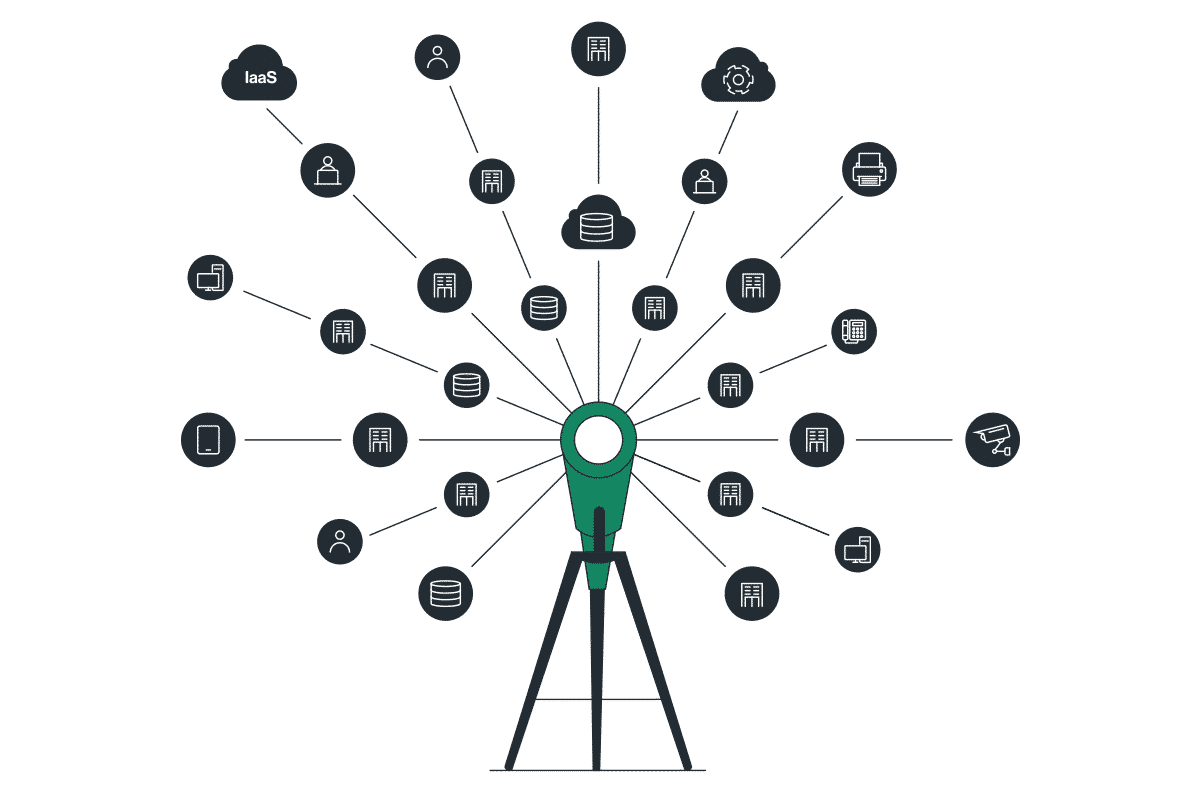Why Network Visibility is Essential for Your Organization

|
Listen to post:
Getting your Trinity Audio player ready...
|
Most modern companies are highly reliant on their IT infrastructure for day-day business, with employees relying on numerous on-prem and cloud-based software solutions for their daily activities.
However, for many companies, the network can be something of a black box. As long as data gets from point A to point B and applications continue to function, everything is assumed to be okay. However, the network can be a rich source of data about the state of the business. By monitoring network traffic flows, organizations can extract intelligence regarding their IT architectural design and security that can enhance IT efforts and inform business-level decision making and strategic investment.
What Type of Data Can Network Monitoring Provide?
Companies commonly achieve visibility into data flowing through the network via in-line monitoring solutions or network taps.
With access to the network data, an organization can perform analysis at different levels of granularity. One option is to analyze network data at a high-level to extract the source, destination, and protocols to baseline the network behavior patterns.
Alternatively, an organization can dig deeper into the network packet payload to determine if it contains malware or other malicious content that places the organization at risk.
Use Cases for Network Visibility
Comprehensive network visibility provides significant benefits to network and security teams alike, and both can take advantage of this to improve network analysis, performance, and security.
Achieving Zero Trust Maturity with Cato SSE 360 | Download the White PaperAdvanced Threat Detection
Advanced threat detection solutions, such as a next-generation firewall (NGFW) or intrusion prevention system (IPS), commonly rely upon network traffic analysis. They inspect traffic flows for indicators of compromise (IoCs) such as malware or known malicious domains. Based on its analysis, the NGFW or IPS can generate an alert for security personnel or take action itself to block the malicious traffic flow from reaching its intended destination.
Zero Trust Security
Zero Trust is based on the principle of least privilege. Devices, applications, and users are granted access to corporate resources based on a variety of criteria including identity, device posture, geo-location, time-of-day, etc., and is constantly validated for fitness to remain on the network. Comprehensive network visibility is essential for implementing tighter security, including Zero Trust, and without it, organizations remain at extreme risk.
Traffic Filtering
Companies commonly implement traffic filtering to prevent employees from visiting dangerous or inappropriate websites and to block malicious traffic flow. These traffic filters rely on the ability to inspect the packet contents and block it appropriately.
However, this protection is commonly limited to the network perimeter where organizations typically inspect and filter traffic. With full network visibility, an organization is able to protect all of its office and remote employees.
Data Loss Prevention
Data loss prevention (DLP) is a vital component of a corporate data security program since it can help identify and block the exfiltration of sensitive business data. DLP solutions work by inspecting network traffic for specific information like file types and data types associated with sensitive data, or potential compliance violations, and then applying policies to prevent data leakage. This is only achievable with enhanced network visibility.
Connected Device Visibility
Many companies lack full visibility into the devices connected to their networks. This lack of visibility can introduce significant security risks as unknown or unmanaged devices may have unpatched vulnerabilities and security misconfigurations that place them and the corporate network at risk. Network traffic analysis can help companies to gain visibility into these connected devices. By monitoring network traffic, an organization can map the devices, and identify unknown and unmanaged devices.
Anomalous Traffic Detection
Network monitoring allows organizations to identify common traffic patterns and potential traffic anomalies. These anomalies could point to issues with corporate systems or a potential cyberattack. Unusual traffic flow could be an indication of lateral movement by an attacker, communication to a command and control server, or attempted data exfiltration.
Network Usage Monitoring and Mapping
Understanding common network traffic patterns can also help inform an organization’s strategic planning. For example, understanding an application’s traffic and usage patterns could highlight unknown bandwidth requirements and help the organization’s cloud migration strategy to ensure maximum performance with minimal latency.
Enhancing Network Visibility with Cato SASE Cloud
To achieve network visibility, companies need strategically deployed solutions that can monitor and collect data on all traffic flowing over the corporate network. As remote work and cloud adoption make networks more distributed, this becomes more difficult to achieve.
SASE (Secure Access Service Edge) provides a means for companies to achieve network visibility across the corporate WAN. The Cato SASE Cloud converges SD-WAN and security capabilities, allowing all WAN traffic to flow across a global private backbone. This in-depth visibility allows all network and security traffic to be inspected, and all policies applied at the ingress PoP closest to the user or application. This ensures that policy enforcement is consistent across the corporate network.
The Cato SASE Cloud is a managed SASE solution that provides comprehensive network visibility and security for a high-performance, global WAN. Learn more about how Cato SASE Cloud can help improve your organization’s network visibility, security, and performance.











